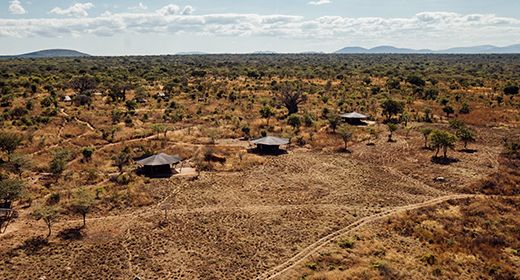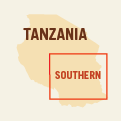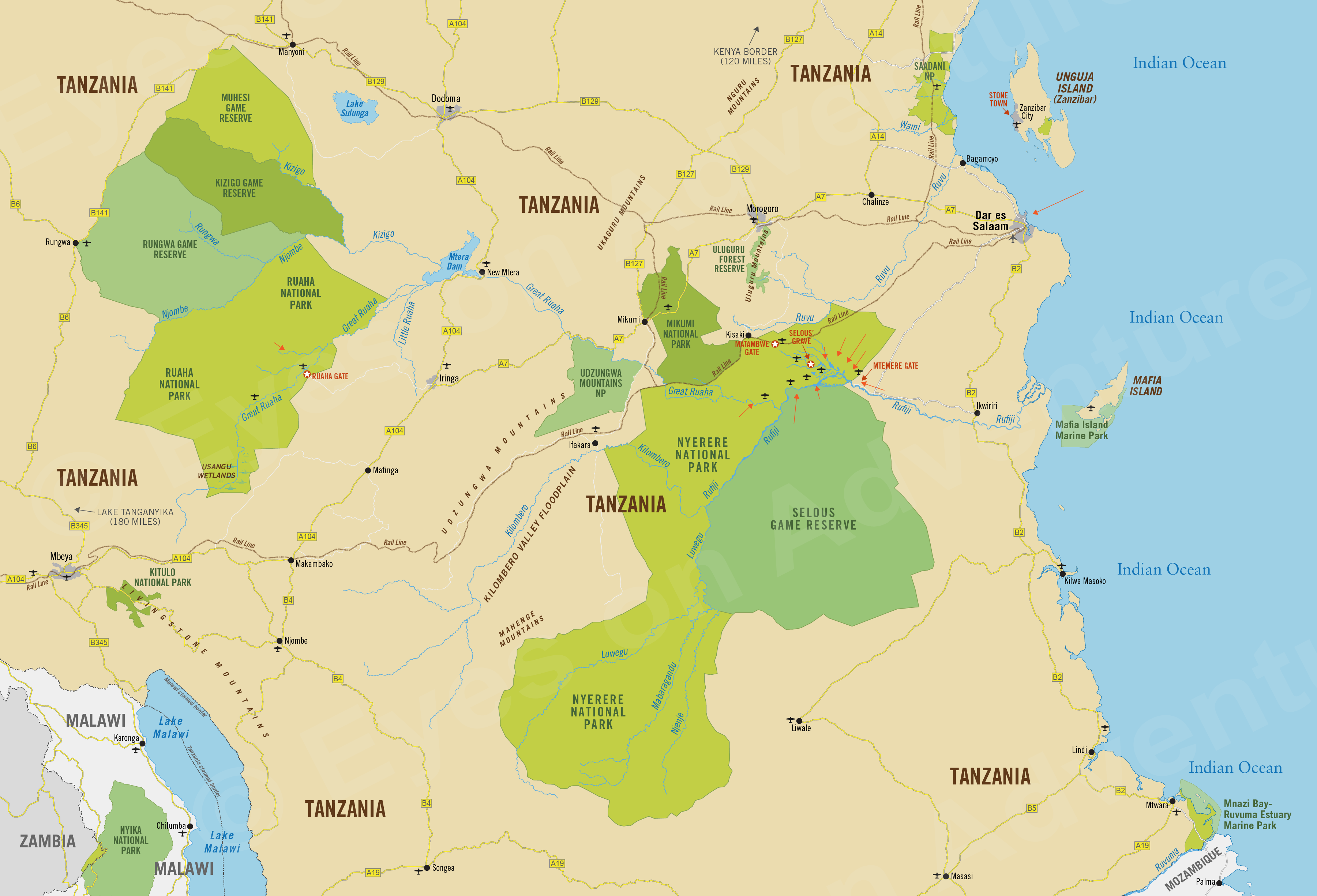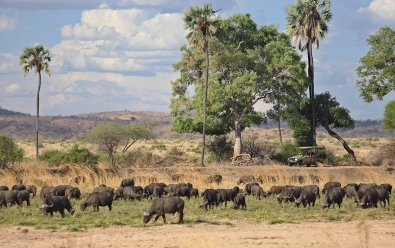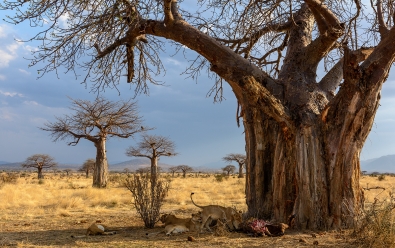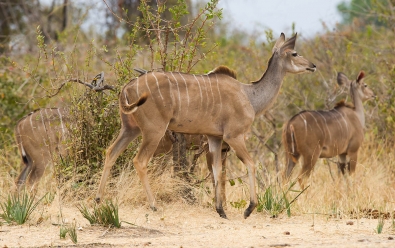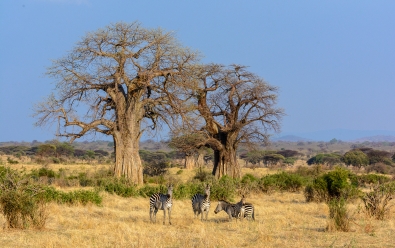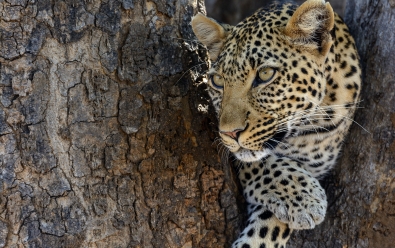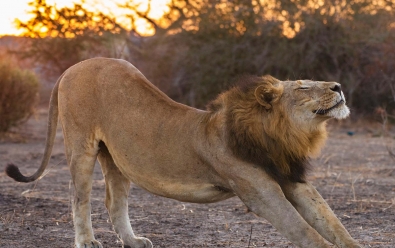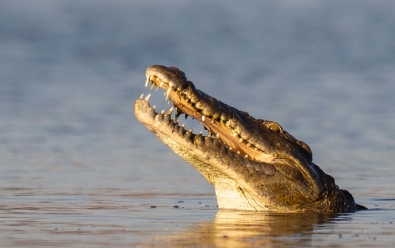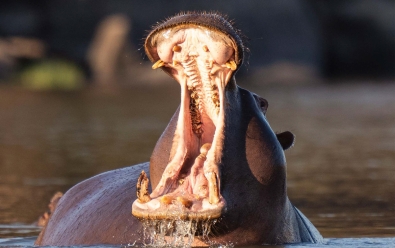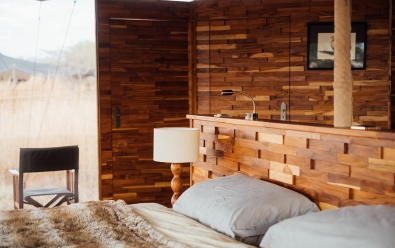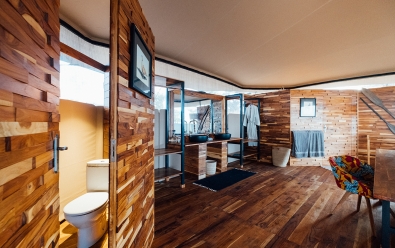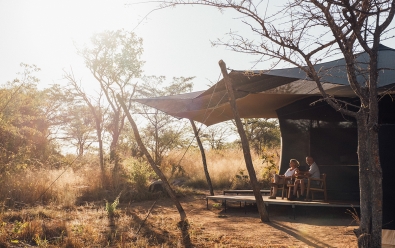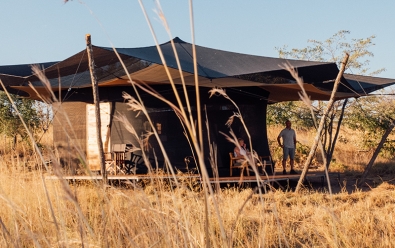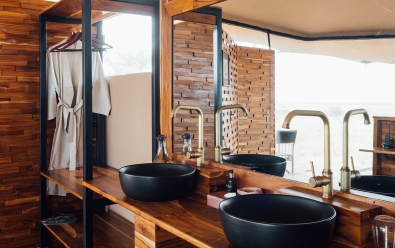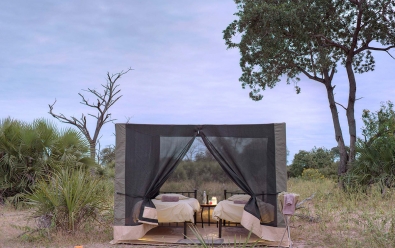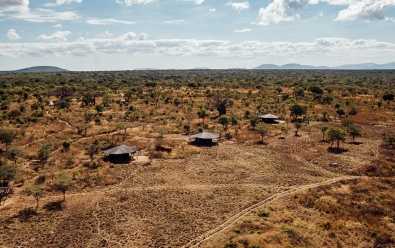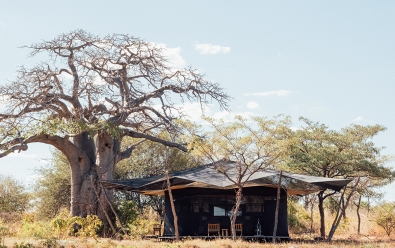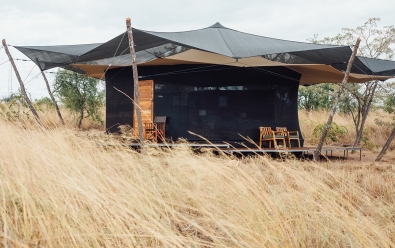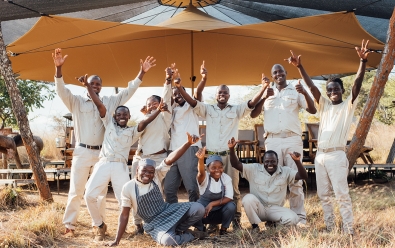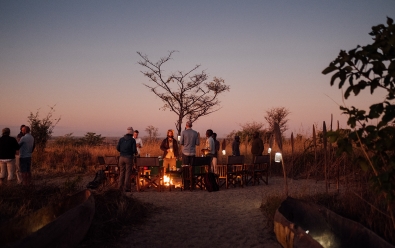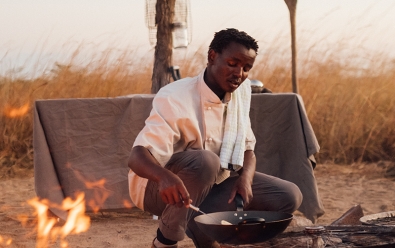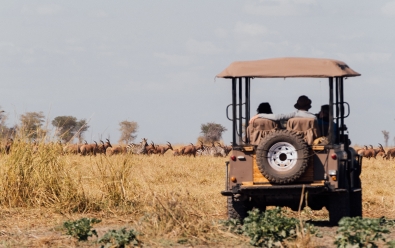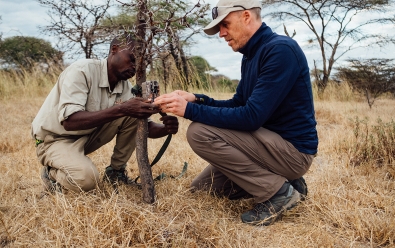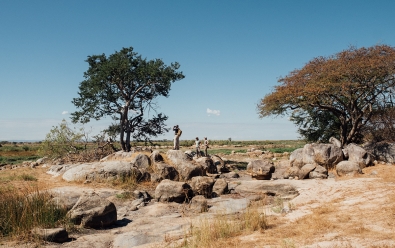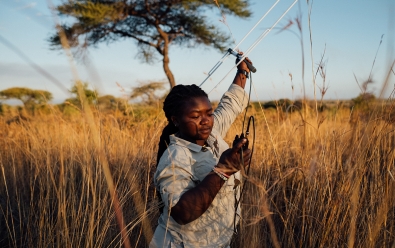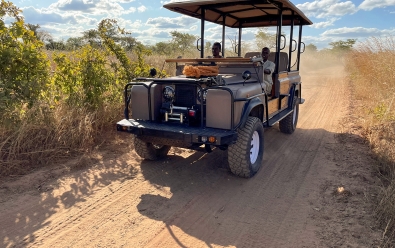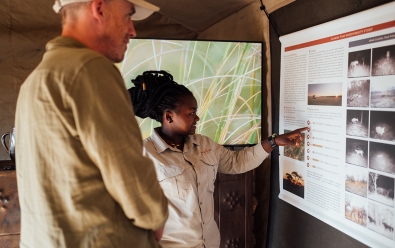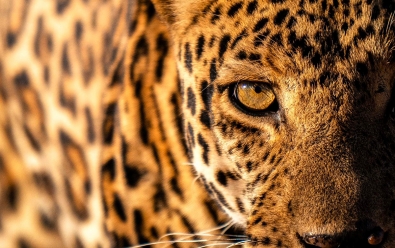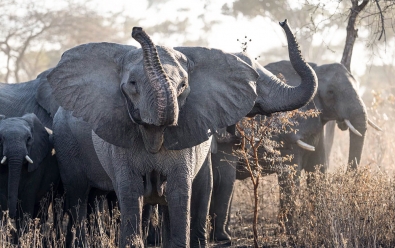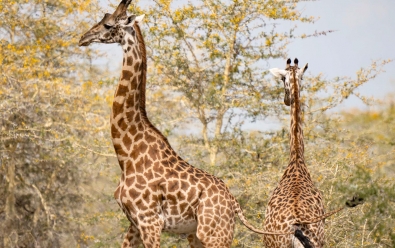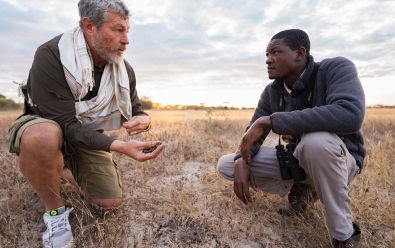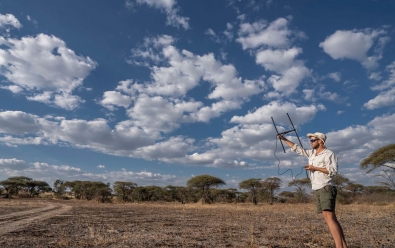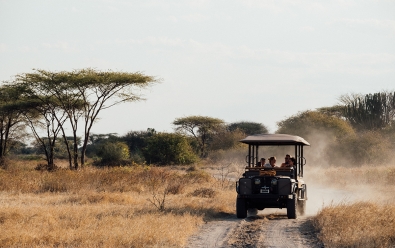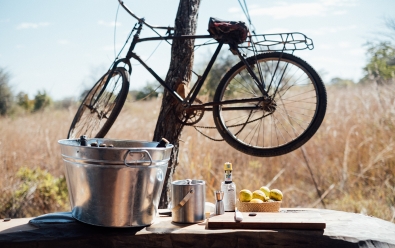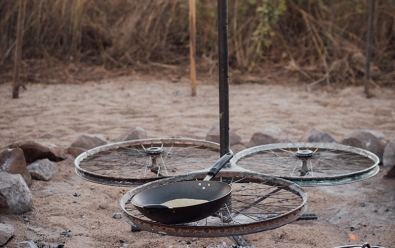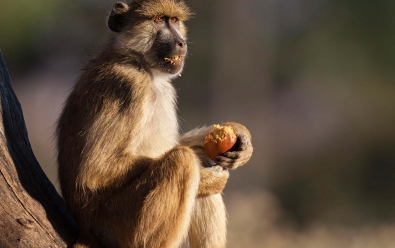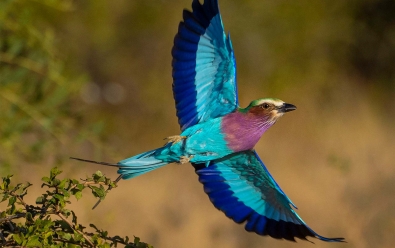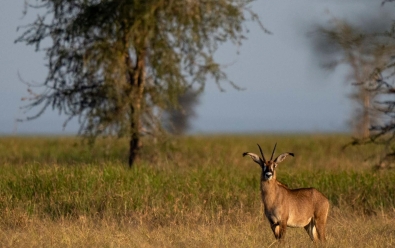Usangu Expedition Camp
Highlights
- Basic camp offering research, adventure, and conservation activities
- Located in a remote area with no other camps for many miles
- Work with researchers to directly aid in conservation initiatives
- Superb wildlife viewing in a diverse wetland habitat
Location
- Usangu Wetlands
- Ruaha National Park
- Southern Tanzania
Usangu Expedition Camp is a combination research, conservation, and adventure initiative located in the remote and seldom-explored Usangu Wetlands.
The Usangu Wetlands are a vital source of water and biodiversity in Ruaha National Park. The Usangu ecosystem only recently gained protection when it was incorporated into the national park in 2006. Guests at this remote camp will not see another vehicle during their stay, as there are currently no other camps in an area four times larger than Kenya's Masai Mara National Reserve.
Read more about the Usangu Wetlands below.
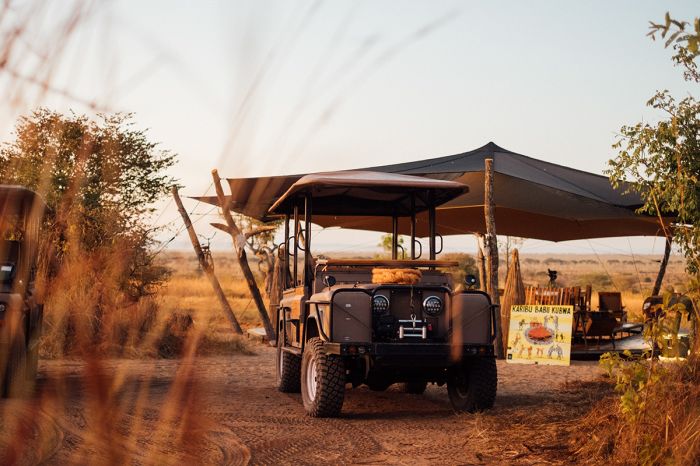
The main camp area and eco-friendly Land Rovers at Usangu Expedition Camp.
Usangu Expedition Camp, which opened 01 June 2022, has just four guest tents, each of which is constructed using minimal wooden supports and with walls consisting of shade cloth, offering 180-degree viewing from within.
Both of Usangu's game-drive vehicles are modified Land Rovers, that operate on ethanol sourced from molasses grown at a nearby plantation. The V8 engines can run on any combination of ethanol and petrol and are designed for passenger comfort and superb off-road capabilities.
Located adjacent to the small camp is the Douglas Bell Eco-Research Station, a collaborative and educational research facility that coordinates all conservation activities in Usangu. Guests to the camp will have the opportunity to learn about the research being conducted and engage with the researchers on a daily basis. Guest experiences will vary depending on which researchers are present.
Safari activities at Usangu include game drives, walking safaris, canoeing, and boating. Uniquely, each guest is assigned a dedicated thermal monocular camera on arrival to the camp. Working with a researcher, each guest will place their camera trap in a location near the camp for the duration of their stay. On the last afternoon, the camera will be retrieved and the images viewed to see which animals have been recorded.
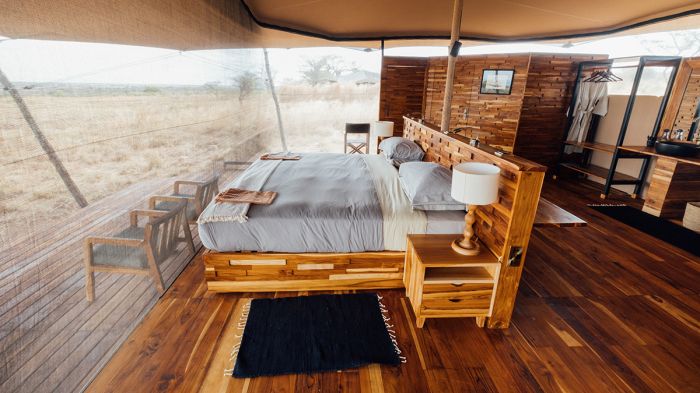
Guest tent interior at Usangu Expedition Camp.
As part of their participation in research during their stay, each guest is encouraged to download and install the iNaturalist app onto their phone, where they can post their own image, as well as those from their camera trap. This app is free and its members are an online community of amateur and professional naturalists that share their sighting to a shared database to build a picture of an area's biodiversity.
For an additional donation, guests can also partake in a wildlife collaring expedition, which includes darting and placing a radio-telemetry tracking collar on a lion, elephant, wild dog, or one of a variety of antelope species being studied at the Research Station. Pre-booking a collaring activity is required.
The mission of Usangu Expedition Camp is to show proof that protecting these wetlands and surrounding floodplains provides current and long-term benefit to the surrounding communities, as well as the greater southeastern Tanzania region. By staying at the camp, guests are directly supporting the efforts to conserve and protect Usangu, as well as directly talking part in conservation and research activities themselves.
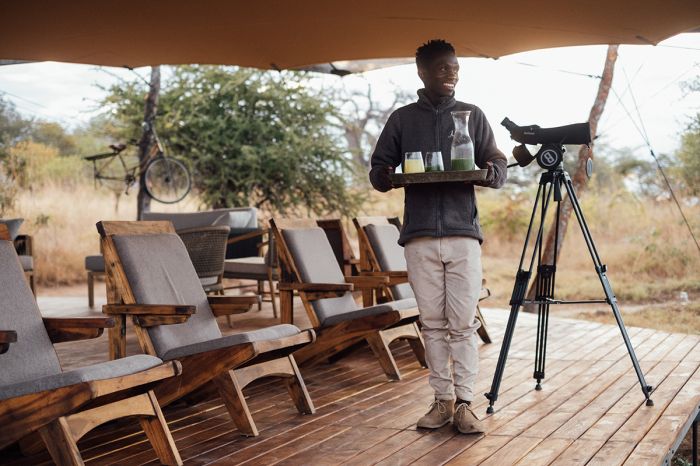
Main tented area at Usangu Expedition Camp.
ABOUT RUAHA NATIONAL PARK
Ruaha National Park was originally declared in 1964 and has increased in size from that time, today covering 7 840 square miles (20 300 sq kms). The park is situated in Tanzania's Rift Valley and is the country's second-largest national park after Nyerere National Park (part of The Selous).
Ruaha National Park is the core area of a much larger protected area that includes three additional contiguous game reserves: Rungwa, Kizigo, and Muhesi. Ruaha is one of the least visited wildlife sanctuaries in Tanzania and visitors here will enjoy a true wilderness experience.
Ruaha's location is in the transitional zone between Eastern and Southern Africa, giving it a tremendous diversity of flora and fauna. Over 1 500 plant species and all the wildlife one can see in the Northern Tanzania parks are also present in Ruaha.

Giraffes and the dramatic Ruaha landscape with an ancient baobab tree and tall palms.
The park is named for the Great Ruaha River, which flows northeast through the national park, after which it bends southeast and enters Nyerere National Park, where it joins the Rufiji River, before flowing into the Indian Ocean. This river and a few of its tributaries are the only permanent sources of water in the park, which makes them the focal point for the best wildlife viewing in Ruaha.
The habitats in Ruaha are varied, with rocky outcrops and enormous granite boulders, steep gorges, sandy river banks with tall 'ilala' palm trees, and open savanna grasslands that are dotted with an abundance of baobab trees. There are also areas of Acacia and miombo woodland. The landscapes are similar to those found in some sections of Tarangire National Park to the north.
Visitors to Ruaha will see plenty of baobab trees, which are sometimes called 'the upside-down tree', which is a reference to their unique shape. The baobab (Adansonia digitata) is one of Africa's most iconic trees, with a lifespan that can exceed two thousand years. The baobab has a sullulent-like capacity to retain water and is deciduous, remaining leafless for about 8 months of the year.
Baobabs have adapted a high resistance to grass fires, which occur regularly in their savanna habitat. The tree produces large, white flowers that open for a single night beginning at sunset. During nighttime, they are pollinated hawk-moths, fruit bats, galagos (bush babies), and other insects. The dried fruits are relished by baboons, elephants, and other herbivores.
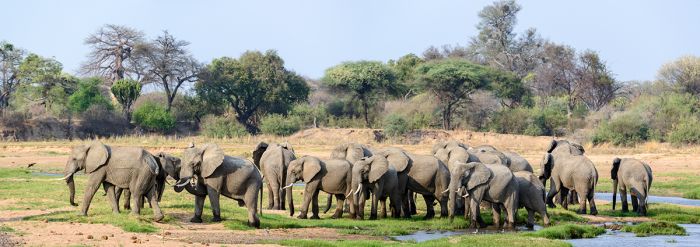
Elephants gathering in the riverbed to drink - Ruaha National Park.
In terms of wildlife, Ruaha is home to large numbers of elephant, plus a number of lesser known antelopes, like sable, roan, and lesser kudu. The park also provides protection for large numbers of buffalo, as well as good numbers of zebra, eland, Grant's gazelle, impala, giraffe, defassa waterbuck, reedbuck, klipspringer, greater kudu, bushbuck, Liechtenstein's hartebeest, and Kirk's dik-dik. Ruaha is one of the few places where both lesser and greater kudu can be seen together.
The greater Ruaha region (including the surrounding game reserves and conservation areas) is home to roughly 10 percent of Africa's lion population, with some prides occasionally reaching twenty or more individuals. Besides lions, Ruaha's resident predators include healthy populations of leopard, cheetah, African wild dog, spotted hyena, black-backed jackal, and crocodile. Striped hyena are seen on occasion.
Due to the diversity of habitats occurring in Ruaha, the bird life is also diverse, with over 570 species recorded. As opposed to overall wildlife viewing, which is best during the dry season, birding is best during the rainy season, during which migratory species arrive from the north to breed.
The park has several good lodges and safari camps, many of them situated along the Great Ruaha River or one of its tributaries in the southeastern sector of the park. Game drives on tracks that follow the waterways provide excellent wildlife viewing. For the more intrepid, legendary bush walks with trained guides are on offer.
Ruaha makes an excellent destination in combination with Nyerere National Park (The Selous), which is located to the east. Ruaha can also be combined with any of the northern parks, including the Serengeti.
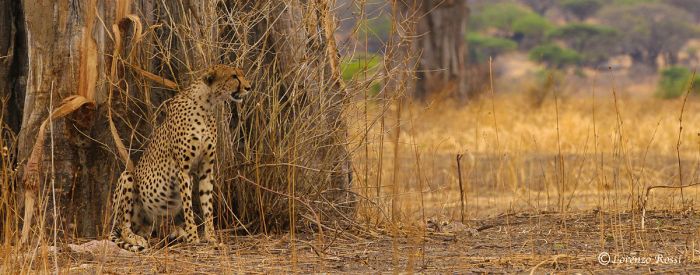
A cheetah seen near Kwihala Camp.
THE Usangu Wetlands
Located in the far southeast of Ruaha National Park, the Usangu Wetlands are a vast ecosystem covering roughly 2 300 square miles (6 000 sq kms) of true wilderness. The swamps and surrounding floodplains are vital to the survival of the Great Ruaha River system, the waterway that provides much of southeastern Tanzania's water and hydroelectric power all the way into the Selous-Nyerere reserves to the east.
The Ihefu Swamp is the permanently wet core portion of the Usangu Wetlands, while the surrounding area consists of grassy marshland and seasonal floodplains. During the long dry season (May thru October), only the Ihefu Swamp has water, but when the rains begin (typically sometime in November), the wetland expands to cover a vast area. Beyond the high-water mark of the seasonal floodplains is Miombo woodland.
The wetlands and expansive floodplains are home to large numbers of wildlife, including Africa's largest herds of topi, which can sometimes be seen gathering in numbers over one-thousand animals.
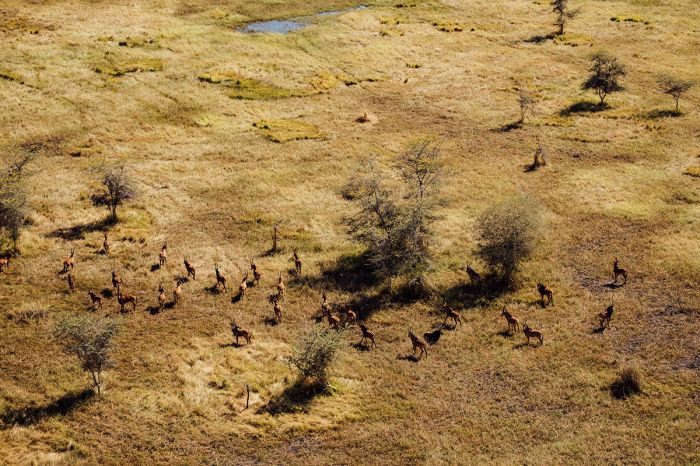
A large herd of sable antelopes on the Usangu floodplains.
Along with the topi are large herds of roan antelope, sable antelope, eland, and amazingly large numbers of ostrich, which are often seen in groups of over 100 birds. Predators include African wild dog, lion, cheetah, jackal, spotted hyena, leopard, and serval, all of which are found in Usangu in good numbers.
Usangu and it dynamic wetlands also provide habitat and breeding grounds for thousands of resident and migratory birds, as well as unknown numbers of amphibians and fishes.
The area surrounding the Usangu was unprotected until 2006, when the Usangu Game Reserve, which covers 1 600 square miles (4 148 sq kms), was incorporated into Ruaha National Park. Despite this new protected status, huge agriculture farms adjacent to the wetlands and outside of the national park continue to divert water and are threatening the entire Ruaha River system.
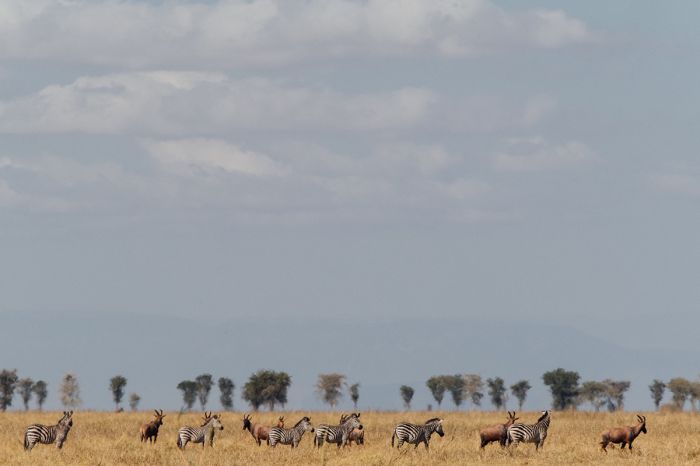
Zebras and topi gathered on the Usangu floodplains.
In 2019, Asilia Africa (the tourism company that owns and operates Usangu Expedition Camp, Jabali Ridge, and Kwihala Camp), in conjunction with Tanzania Wildlife Research Institute (TAWIRI) and Tanzania National Parks Authority (TANPA), set up a project in the wetlands to study the ecosystem and assess the potential of implementing tourism, developing a more robust water management plan with local government and business, and how to protect the wetlands.
The project also supports monitoring and collaring the rich biodiversity of wild animals that inhabits the wetlands and surrounding dry areas, as well as reducing poaching and human-wildlife conflict by engaging local communities and stakeholders.
A stay in Usangu contributes directly to the vitally important conservation efforts underway to ensure the protection of this region, its wildlife, and the crucial water source it provides.
ROOMS INCLUDES & EXCLUDES CHILDREN FACILITIES ACTIVITIES
Accommodation
4 guest accommodations in total comprising:
- 4 uniquely-designed 'tents' (with shade-cloth 'walls'), all of which can be set up with a king or twin beds.
- Each tent also has an optional-use 'Star Cube' set up in a private setting. These 'cubes' are made from mesh and offer a 'sleep-under-the-stars' experience. Star cubes are also used for the optional fly camping activity.
The tents include plumbed en-suite facilities with a double-basin vanity, indoor shower, and separate flush toilet. The tents are accessed via footpaths on the ground leading to the main camp area.
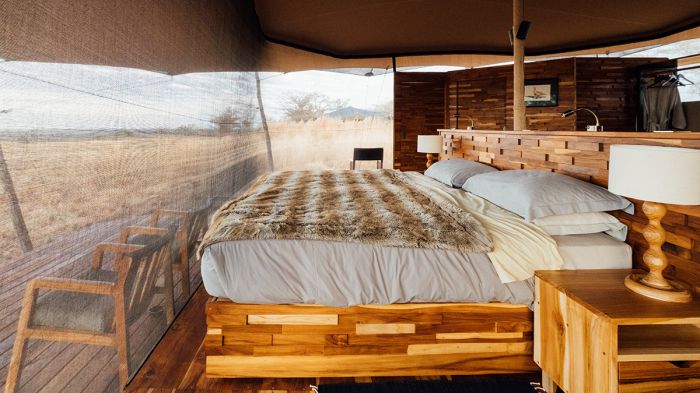
Guest tent interior at Usangu Expedition Camp.
The camp and guest tents are situated on the outer edge of the wet-season high-water mark of the Usangu Wetlands (read all about these wetlands on the Overview tab).
The tents are constructed atop slightly-elevated wooden platforms and feature walls made of shade cloth on all but the rear of the tent, which means guests have 180-degree views from their bed.
Roll-down canvas can be lowered to cover the mesh walls in case of rain or wind. An outer canvas tarpaulin covers the top of each tent. A shaded outdoor veranda with seating wraps around two sides of the tent.
Other items and features in the guest tents include:
- Table and chairs inside and on the outdoor veranda.
- Clothes storage wardrobe with hangers.
- Safe.
- 24-hour power (provided using a combination of solar and generator) for lighting and charging electronics.
- Hairdryers are not supported by the solar / generator power system.
- WiFi available in the main guest area only.
- Mobile phone signal is spotty.
Usangu Expedition Camp can accommodate a maximum of 8 guests in total: 2 persons in each of the 4 guest tents.
Includes & Excludes
Includes:
- All meals and house drinks, including wines, local brand spirits and beers, teas, and coffees.
- Safari experiences (twice-daily or full-day game drives, night drives, bush walks, fly camping, multi-day walking expeditions -must be pre-booked, canoeing, boating, and birding) accompanied by an experienced guide.
- Access to the Douglas Bell Eco-Research Station located adjacent to the camp.
- Predator and antelope research activities with researchers, presentations on the ongoing research, and telemetry tracking of GPS-collared key species.
- Sundowner drinks and snacks.
- Laundry services are not available.
- Wi-Fi access (in the main guest area).
- Jongomero Airstrip transfers (2-hour drive).
- Tourism Levy & VAT.
Excludes:
- Champagne, cognacs, fine wines, premium brand spirits, and cigars.
- Any applicable wildlife fee, park fee, reserve fee, concession fee, other land-use fee.
Single Supplement
A single supplement may apply for any room booked by a single traveler; please ask us for pricing.
Children
Children aged 12 years and older are accommodated at Usangu Expedition Camp:
- Younger children can be accommodated only if the entire camp is booked on an exclusive basis.
- Participation in walking activities, fly camping, and canoeing is limited to children 12 years and above.
Facilities
The main camp area and guest tents are situated on the outer edge of the wet-season high-water mark of the Usangu Wetlands (read all about these wetlands on the Overview tab).
The main guest area consists of a simple, single open-sided, canvas-covered structure supported by wooden posts atop a slightly elevated wooden platform. There is comfortable lounge seating and tables used for dining and a simple bar.
Meals are prepared over an open campfire and the area in front of the tented space includes an outdoor dining space.
Main guest area facilities include:
- The main guest area tented structure that includes a dining area, lounge, and bar.
- The Douglas Bell Eco-Research Station is located adjacent to the camp.
- Meals are prepared over the open campfire with dining either under the canvas structure or al fresco.
- Campfire area.
- Complimentary Wi-Fi access.
- Mineral water is provided in the main camp areas and in the guest tents.
- The camp is powered by a combination of solar and generator.
Activities
Activities included in the rate:
- Morning and afternoon/evening game drives in semi-open, eco-friendly, 4x4 vehicles.
- Drives after dark are also possible to see some of the park's nocturnal animals.
- Guided bush walks. Children must generally be 12 years of age (or given clearance at the discretion of the guide).
- Multi-day walking adventure to a more remote area of the wetlands. Camp under the stars. Needs to be pre-booked.
- Boating and canoeing in the permanent swamp.
- Visits to the Douglas Bell EcoResearch Station.
- Outings with researchers to assist in research and conservation activities.
- Fly camp for a night at Usangu Trails Camp using specially-designed Usangu Star Cubes. Does not need to be pre-booked.
- Camera Trap Experience to capture images of predators living around the camp.
- Telemetry tracking of collared animals being studied.
- Contribute to iNaturalist using the app on your phone to report all species you have seen during your visit.
- Sundowners.
- Birding.
- All game drive vehicles fitted with inverters for battery charging on game drives.
Optional activities at additional cost:
- Wildlife collaring expedition, which includes darting and placing a radio-telemetry tracking collar on a lion, elephant, wild dog, or one of a variety of antelope species being studied at the Research Station. Pre-booking is required.
Example of a typical day:
- Early morning wake-up call. Morning wake-up and activity times vary according to the seasons, activities on offer, and wildlife sightings.
- Light breakfast before departing on the morning activity or food packed for an earlier departure.
- Return to the camp for a meal and rest period (full-day outings mean lunch is packed).
- Meet for afternoon tea and snacks (savory and sweet choices) before departing on the activity.
- Return to camp - freshen up or meet for drinks, followed by dinner.
- Enjoy a nightcap and/or discussion at the bar or around the campfire before retiring.
Great Good Fair Poor
- Jan
- Feb
- Mar
- Apr
- May
- Jun
- Jul
- Aug
- Sep
- Oct
- Nov
- Dec
GENERAL TIPS
The Ruaha region is an excellent wildlife-viewing destination throughout year, with healthy populations of all of the big cats including lion, leopard, and cheetah, as well as spotted hyena and African wild dog. Herbivores are also present in large numbers, especially elephant, giraffe, buffalo, impala, and greater kudu.
Similar to the Serengeti and Masai Mara regions further to the north, the rains in Ruaha occur between November and April and it is advisable to avoid the region during March and April, when heavy rains typically occur. June to mid-October is outstanding for wildlife viewing, especially along the various waterways, which become a focal point for the animals during the dry season.
Usangu Expedition Camp is closed from 01-December thru 31-May.
RAINS
The rainy season in the Ruaha region is from November thru mid-May, with two distinct rain seasons. The "Short Rains" (locally called the "mvuli") fall from mid-November to mid-December and are generally lighter and less impactful to safari activities. The "Long Rains" (locally called the "masika") occur between March and May, brining afternoon showers on a near daily basis.
Short Rains
The short rains occur for about one month sometime during November and December (the exact time varies somewhat year to year). This period is called the 'short' rains because the duration of an individual rain event is short and it is rare to have an all-day rain event. Most rain falls as an afternoon shower, while mornings are typically overcast or clear.
The first rains typically arrive sometime in mid-November, but December receives the bulk of the short rains. The landscape turns verdant and thousands of migrant birds arrive. Impalas and warthogs give birth and the land feels revitalized.
January / February
January and February (the period between the 'short' rains and the 'long' rains) are unpredictable with regards to rain, as in some years the rains abate before starting again in March, while in other years, the short rains do not end and continue falling before becoming more serious in March.
Many days are clear and the amount and duration of the rain events is unpredictable, with some afternoon showers and the odd long and heavy shower. The landscapes during this period are spectacularly green and beautiful, with wildflowers abundant in the meadows.
Long Rains
The long rains occur between March and May, with April being the wettest month of the year. During this time, rain should be expected almost every day and the showers can last for hours at a time, although all-day rain is not typical.
The roads in the park can be quite difficult during the long rains, which means more difficult driving. Cloudy skies are typical and temperatures can be chilly at times.
TEMPERATURES
The temperatures in the Greater Ruaha region do not experience wide fluctuation during the year, as the region lies between five and eight degrees south of the equator. In general, daytime temperatures are comfortably warm and overnights and early mornings are mild to chilly. Bring a fleece regardless of the timing of your visit.
Dry Season
During the dry season (June thru October), the days are sunny and warm and rarely hot. Rainfall is extremely rare. From June thru August, the afternoon temperature averages 77-80°F (25-27°C), but some days can be warmer. Evenings and early mornings temperatures are often chilly, averaging 57-57°F (13-14°C).
September and October days are warm and sunny, with temperatures averaging 82-86°F (28-30°C), with mild to cool mornings, averaging 61-63°F (16-17°C).
Rainy Season
The rain season begins sometime in November and continues through mid-May (read more above). Temperatures during this period are fairly static, with daytime temperatures averaging 82-86°F (28-30°C) and nighttime and early morning temperatures slightly warmer than the dry season, averaging 63-64°F (17-18°C)




